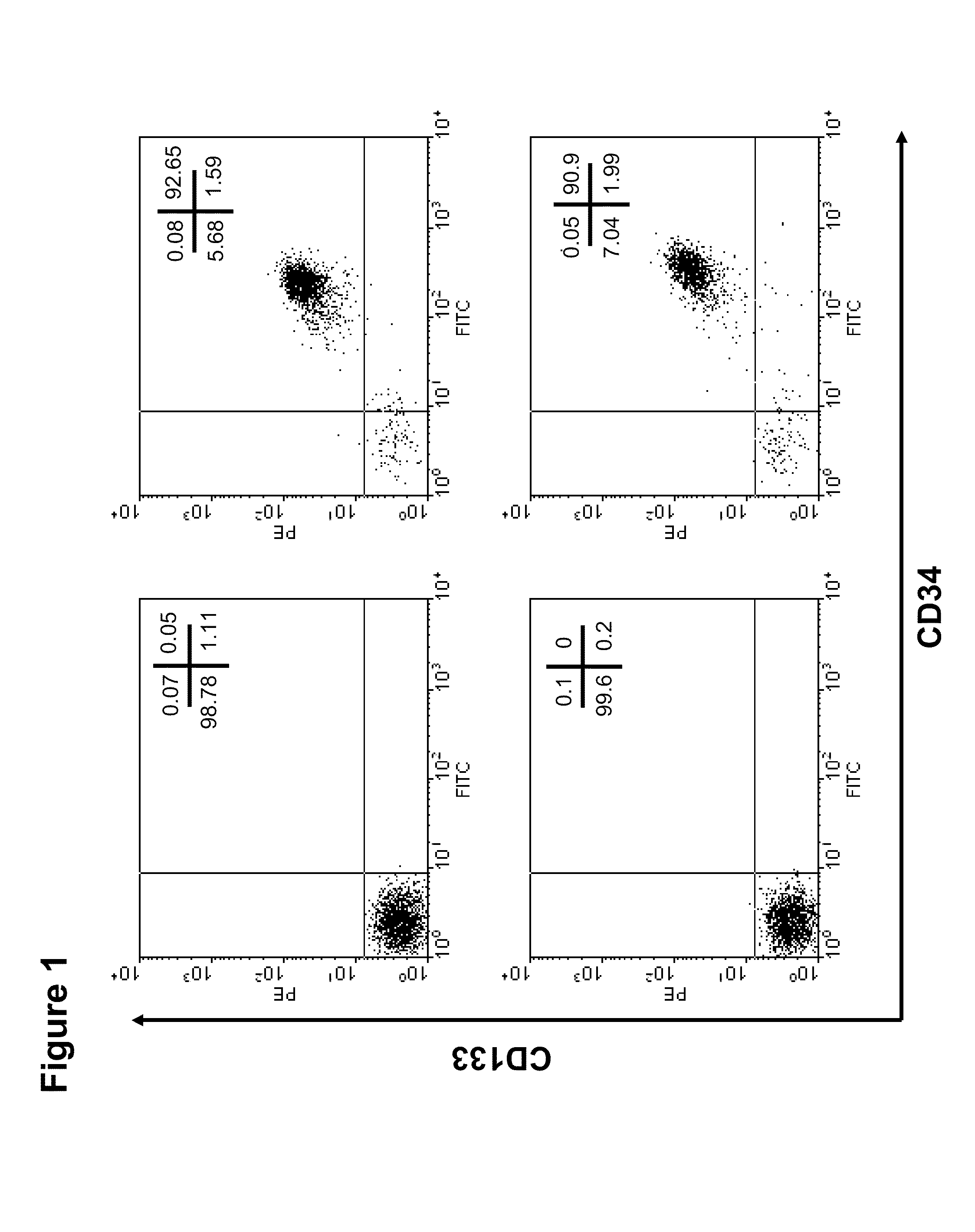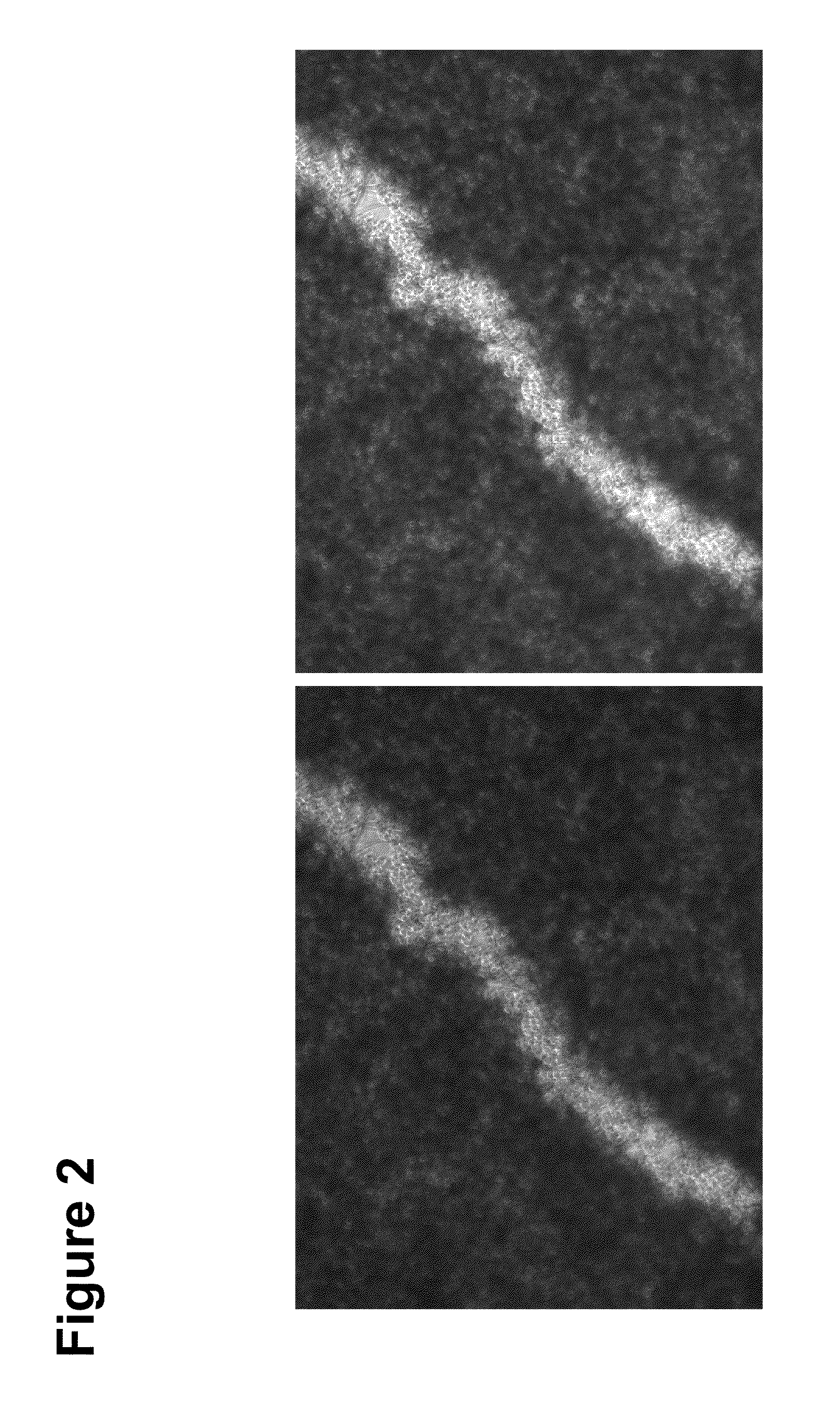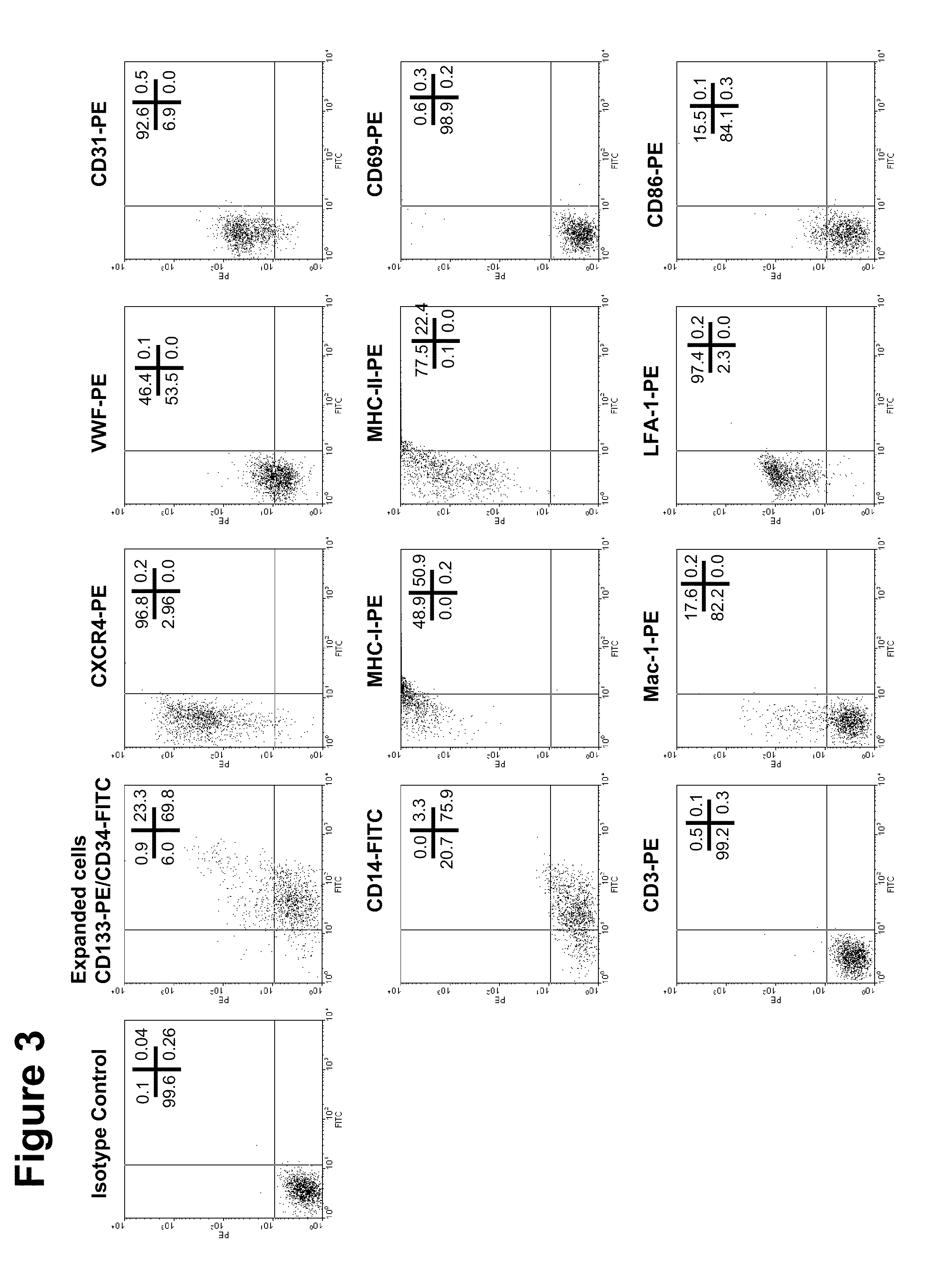Erythrocytes differentiated in vitro from nanofiber expanded CD133+ cells
a nanofiber and erythrocyte technology, applied in the field of erythrocyte differentiation in vitro from nanofiber expanded cd133+ cells, can solve the problems of significant ramifications of treatment limitations, insufficient treatment for a significant number of patients who remain incompletely revascularized, and morbidity and mortality, so as to reduce the need for surgical or pharmaceutical intervention, delay or eliminate the effect of treatment limitations
- Summary
- Abstract
- Description
- Claims
- Application Information
AI Technical Summary
Benefits of technology
Problems solved by technology
Method used
Image
Examples
example 1
[0129]Using biofunctional nanofiber scaffold that can at least partially mimic the bone marrow (BM) stem cell niche for efficient expansion of human umbilical cord blood (UCB) derived hemangioblasts, we transfected expanded (˜225 fold) stem cell population with pro-angiogenic growth factors, and evaluated the neovascularization potential. Flow cytometric analysis revealed that expanded cells retained their progenitor stem cell characteristics. These expanded cells express higher levels of CXCR4 and LFA-1 molecules, are directly linked to cellular homing and adhesion as compared to freshly selected UCB selected cells. Functional analysis revealed that these cells can uptake efficiently AcLDL, migrate in a transwell membrane plate, and can differentiate into endothelial or smooth muscle phenotype. To evaluate neovascularization potential in vivo, hind limb ischemic model was generated and tested with modified stem cell therapy. Expanded cells transfected with angiogenic factors effici...
example 2
Isolation of Fresh Umbilical Cord Blood Derived Stem Cells and Ex Vivo Expansion
[0167]In general, via regular processing of human umbilical cord blood samples (60-80 ml sample volume) we are able to isolate 5×105 to 1×106 CD133+ cells using a magnetic bead-conjugated immunopurification system (AutoMACS, Miltenyi Biotec Inc.) Representative flow cytometric analysis revealed that UCB-derived CD133+ cells isolated by this method were above 90% pure (FIG. 1). However, it would be preferable to obtain a larger number of cells than this purification method yields, especially for applications such as ex vivo characterization. Applicants describe herein a way to significantly expand these cells ex vivo without major changes in their phenotype. We demonstrate here our ability to successfully expand an initial population of 20,000 cells to a quantity of at least 4.5 million (225-fold amplification) cells over 10 days of culture using a 24-well nanofiber coated plate. Even at day 5, a 20 to 25...
example 3
Phenotypic Characteristics of the Expanded Stem Cells
[0168]To examine phenotype of these expanded cells, flow cytometric analysis was performed using several relevant antibodies (FIGS. 3, 23 and 25). Almost 24% of the total cells retain their CD133 positivity and 93% of the cells retain their CD34 positivity. A remarkable increase in expression of two important pro-migratory and pro-adhesive molecules (CXCR4 and LFA-1, respectively) was observed in this analysis. Mild to moderate expression of other myeloid markers were observed such as CD14, CD86, vWF, CD31 or Mac-1. These expanded cells do not express any activation markers (CD69) or pan T cell markers (CD3) molecules on their surface, indicating that these expanded cells retain their stem cell characteristics. However, these cells highly express MHC class-I or Class-II molecules on their surface.
PUM
| Property | Measurement | Unit |
|---|---|---|
| concentrations | aaaaa | aaaaa |
| concentrations | aaaaa | aaaaa |
| length | aaaaa | aaaaa |
Abstract
Description
Claims
Application Information
 Login to View More
Login to View More - R&D
- Intellectual Property
- Life Sciences
- Materials
- Tech Scout
- Unparalleled Data Quality
- Higher Quality Content
- 60% Fewer Hallucinations
Browse by: Latest US Patents, China's latest patents, Technical Efficacy Thesaurus, Application Domain, Technology Topic, Popular Technical Reports.
© 2025 PatSnap. All rights reserved.Legal|Privacy policy|Modern Slavery Act Transparency Statement|Sitemap|About US| Contact US: help@patsnap.com



